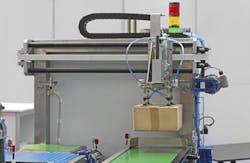Material handling equipment: How to reduce cost of maintenance
As the U.S. economy continues to recover from the financial crisis, the business environment has improved in the manufacturing and construction sectors. This has led to greater demand for material handling equipment, such as pallet trucks, forklifts and aerial lifts, which has affected cost of maintenance.
In turn, this increase in demand has driven up the prices of such equipment over the past three years. The cost of owning the equipment has also risen, and buyers of material handling equipment need to consider the long-term costs of ownership as well as the purchase price when deciding which equipment would be best for their organization.
According to a new report from IBISWorld, the biggest costs associated with operating pallet trucks and forklifts are operator training, maintenance and fueling. Maintenance costs can be especially high in the manufacturing and construction sectors, where pallet trucks and forklifts are frequently exposed to hazardous conditions that accelerate wear and tear and can lead to damage.
The cost of maintenance will vary depending on the type, age and condition of the vehicle, where it is used and how many operating hours it accrues on an annual basis.
Fuel-related costs can also add up over the life of a pallet truck or forklift, so buyers need to examine the likely costs of liquefied petroleum gas versus electric vehicles, taking into account the need to purchase refueling equipment and the frequent refueling required for gas-powered models.
IBISWorld points out that all these expenses significantly add to the total cost of owning a forklift or pallet truck, but there are ways that they can be reduced.
Electric forklifts tend to have lower long-term costs. Powder coating will improve the durability of a pallet truck’s forks, body, frame and steering handle. And buyers should remember that new equipment has lower maintenance costs than used equipment, so the purchase price should be weighed against expected maintenance costs when choosing new or used equipment.
If the equipment will only be used for a limited amount of time, it might be more cost-effective to rent or lease rather than buy.
For aerial lifts, preventative maintenance is another expense that contributes to total ownership costs because of the risk of an accident when working on an elevated platform. Maintenance costs can also be substantial.
Again, it may save on costs in the long run to rent or lease the equipment.
As well as avoiding the high initial outlay required when purchasing, renting equipment lessens the risks associated with breakdowns and maintenance and usually ensures access to the latest models and technologies.
But in cases where it still makes sense to purchase rather than rent, buyers can often lower the total cost of ownership by paying more upfront for newer equipment or equipment that runs on electricity rather than gas, IBISWorld concluded.
